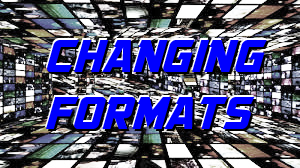 The number of people watching broadcast television dropped dramatically over the past five years. Now cable television saw its first massive drop off of viewers in 2015. The pattern is rapidly changing the landscape of how people watch programs. The same movement killed DVD sales 5 years ago and has now taken a bite out of Blu-Ray sales in 2015.
The number of people watching broadcast television dropped dramatically over the past five years. Now cable television saw its first massive drop off of viewers in 2015. The pattern is rapidly changing the landscape of how people watch programs. The same movement killed DVD sales 5 years ago and has now taken a bite out of Blu-Ray sales in 2015.
So, where did the audience go?
To Internet based programming.
Smart TVs have allowed easy access to programming on the Internet. Providers that stream programming like NETFLIX for the general market and PUREFLIX for the faith-based market have taken the public by storm (although the faith-based market is much slower to transition). Netflix even out bid the largest film studios with a record-breaking film purchase at Sundance.
Quality and accessibility have played a major factor in this movement to the Internet. Cloud video libraries have also popped up and have seen great success with HD, HDX and UHD size/quality standards. Libraries include VUDU (Walmart), Amazon Prime (Amazon), iTunes (Apple), CinemaNow (Best Buy) and Disney Anywhere (Disney). The success is attributed to an individual being able to purchase movies and store them in their virtual library to watch on any device at anytime from anywhere.
Additional benefits to better distinguish choices between libraries are offered by several companies. For instance, VUDU allows a person to add DVDs and Blu-Rays already owned to their library. Disney ties in with VUDU and iTunes so you can watch a Disney film on VUDU, iTunes or Disney Anywhere. For those still purchasing physical discs (DVD or Blu-Ray) Ultra Violet allows the title to be immediately added to any or all of the individual’s libraries.
VUDU is currently the clear leader in cloud libraries and boasts the most titles made available. When a person buys a DVD or Blu-Ray at Walmart, within 1-3 seconds the title is automatically loaded into the person’s cloud library, so the kids can start watching before mom gets home from the store. VUDU also adds videos purchased from other sources to a person’s library.
The Internet drove the development of HD (22mbps worth of quality), which pulled audiences away from broadcast TV (7mbps of quality). Once subscription programming became popular, a variable of HD known as HDX (27mbps of quality) was ignited and cable providers had to negotiate with content providers before audiences left. This battle for survival created the new UHD (250mbps of quality), which was sized to fit the standard cable channel capacity (256mbps of quality). However, people don’t like to be tethered and are walking away from cable TV as well.
Production companies have to stay on top of the distribution systems in order to maintain the appropriate level of quality. Shooting 4K is a must due to 80% of all distribution outlets now require that level of quality. While some still get away with 2K (and even fewer with HD), the writing is on the wall for films requiring special effects. Talking head shows can still get away with HD for a couple more years, but the transition is eminent.
The good news is that consumer and prosumer cameras, thanks to the cell phone, are already shooting 4K. This makes the right level of quality available to all independent filmmakers. However, an excellent director of photography that knows his lighting and lenses can still create a higher quality look with HD than an amateur can with 4K. Unfortunately there are a lot of independents that won’t switch to 4K this year and they’ll release substandard shows that muck up the marketplace.
The consumer has spoken by their actions. Broadcast television is dying out with the Baby Boomers. Cable is fading away with Gen X. And, digital libraries and live streaming events are here to stay through the life expectancy of the Millennials and Generation Z.
Within one and a half generations the entire landscape of film and television changed. Film rarely uses film stock, as its been replaced by digital media. Television rarely uses the airwaves, as its been replaced by the Internet. Yet, we still call it film and television. The audience has moved and ripe for the film entrepreneur to capture. That is, as long as he is willing to release in a format other than the one he dreamt about when he was a kid.
© 2016 by CJ Powers
